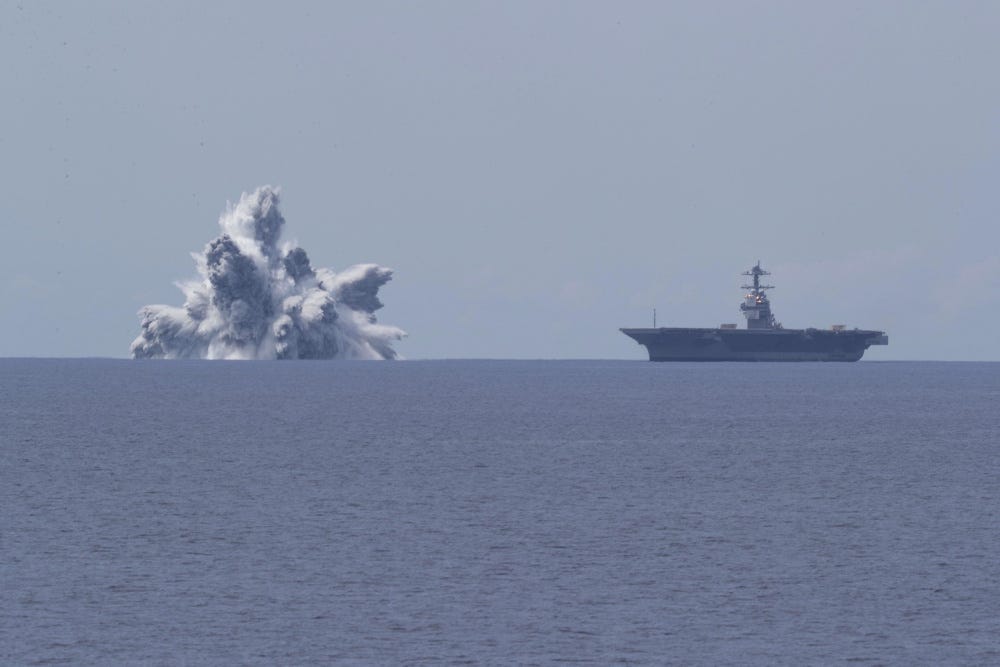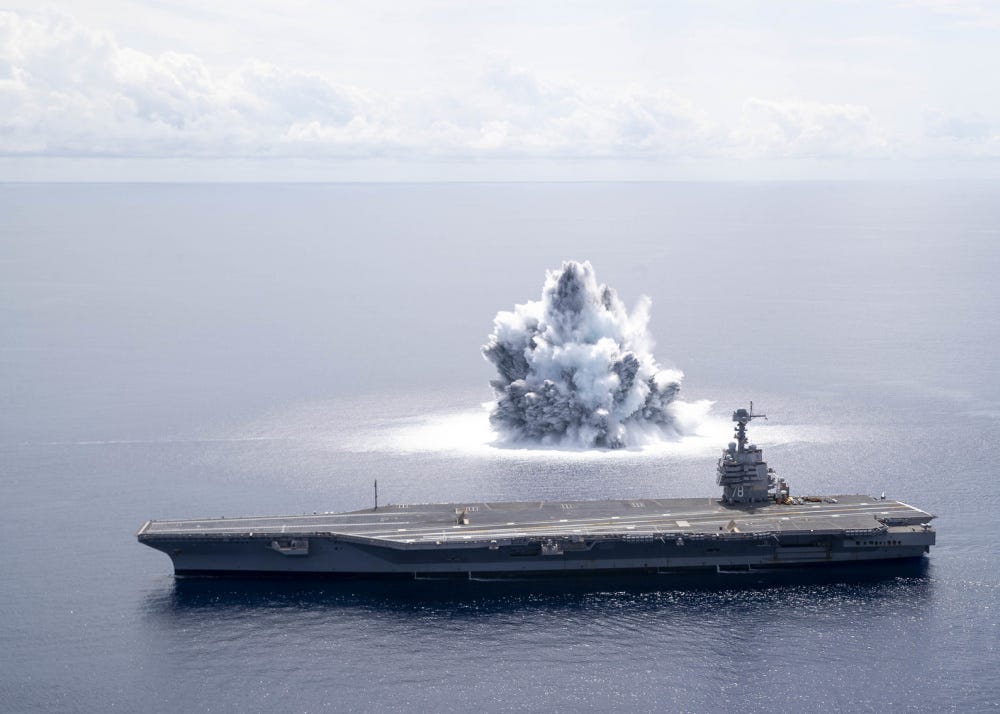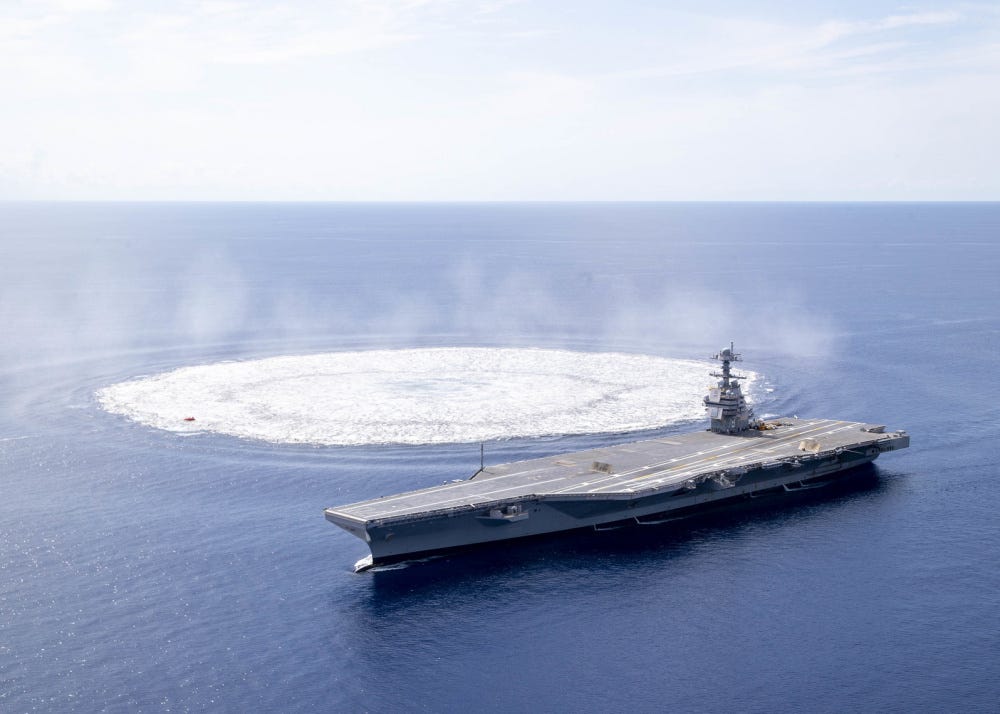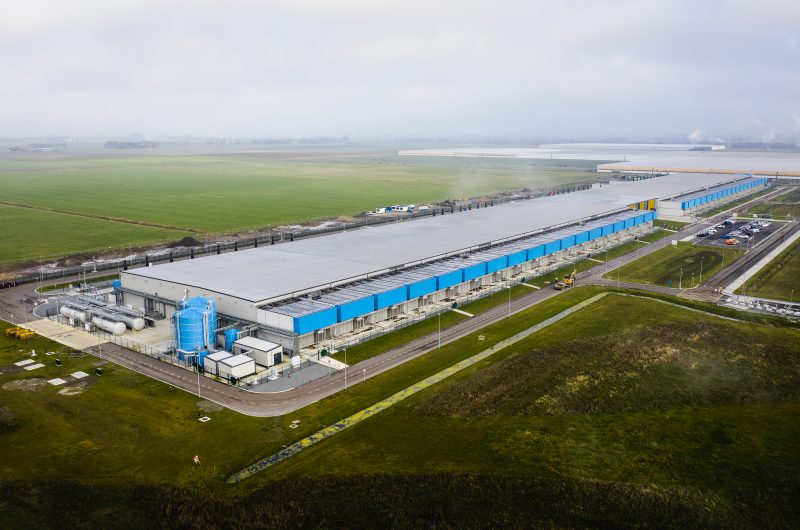
US Navy photo by Mass Communication Specialist 3rd Class Riley B. McDowell
- USS Gerald R. Ford completed the first explosive event of full-ship shock trials Friday.
- The Navy detonated explosives near the carrier to see how it holds up against shock and vibrations.
- The standard testing is designed to simulate real battle conditions.
- See more stories on Insider's business page.
The US Navy's new supercarrier is going through shock trials, and that means setting off live explosives near the warship to simulate actual combat conditions.
USS Gerald R. Ford (CVN-78), the first of a new class of aircraft carriers, completed the first explosive event of the ongoing full-ship shock trials on Friday off the US East Coast, where the Navy detonated explosives near the carrier.
The Navy said the carrier was "designed using advanced computer modeling methods, testing, and analysis to ensure the ship is hardened to withstand battle conditions, and these shock trials provide data used in validating the shock hardness of the ship."

US Navy photo by Mass Communications Specialist Seaman Jackson Adkins
The official Twitter account for USS Gerald R. Ford tweeted Saturday that "the leadership and the crew demonstrated Navy readiness fighting through the shock, proving our warship can 'take a hit' and continue our mission on the cutting edge of naval aviation."
-USS Gerald R. Ford (CVN 78) (@Warship_78) June 19, 2021
Though the Navy has conducted shock trials with other vessels, the latest trials with the Ford, the service's newest and most advanced carrier, mark the first time since 1987 the Navy has conducted shock trials with an aircraft carrier.
The last aircraft carrier shock trials involved the Nimitz-class aircraft carrier USS Theodore Roosevelt, according to the Navy.

US Navy photo by Mass Communication Specialist 3rd Class Zachary Melvin
Shock trials are designed to test how Navy warships hold up against severe vibrations and identify potential shock-related vulnerabilities in a combat vessel.
A 2007 study, sponsored by the Office of Naval Research and conducted by the MITRE Corporation's JASON program, said US Navy shock trials have their origins in observations from the Second World War.

Navy photo by Mass Communication Specialist 3rd Class Riley B. McDowell
During the major global conflict, "it was discovered that although such 'near miss' explosions do not cause serious hull or superstructure damage, the shock and vibrations associated with the blast nonetheless incapacitate the ship, by knocking out critical components and systems," the study said.
Nearby explosions, even though vessels were not taking direct hits, would send destructive, high-pressure waves toward ships, the report said, noting that "this discovery led the Navy to implement a rigorous shock hardening test procedure."

US Navy photo by Mass Communication Specialist 3rd Class Riley B. McDowell
After completing full-ship shock trials, the aircraft carrier will return to the pier at Newport News Shipbuilding for its first planned incremental availability, a six-month period during which the ship will undergo "modernization, maintenance, and repairs prior to its operational employment," the Navy said.
As a first-in-class ship, USS Gerald R. Ford has been experienced cost overruns, developmental delays, and technological setbacks, but the Navy is moving forward with the project.
The Navy planned to have the carrier ready for deployment by 2024, but in May, Rear Adm. James Downey, program executive officer for aircraft carriers, suggested the service might be able to get there sooner.
There are three other Ford-class carriers in various stages of procurement and development, namely USS John F. Kennedy (CVN-79), USS Enterprise (CVN-80), and USS Doris Miller (CVN-81).










